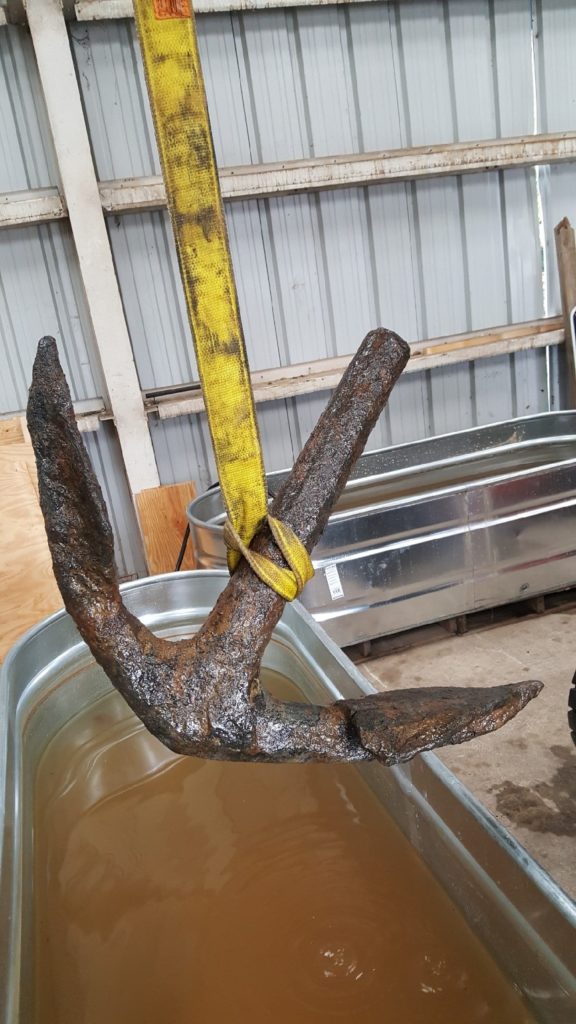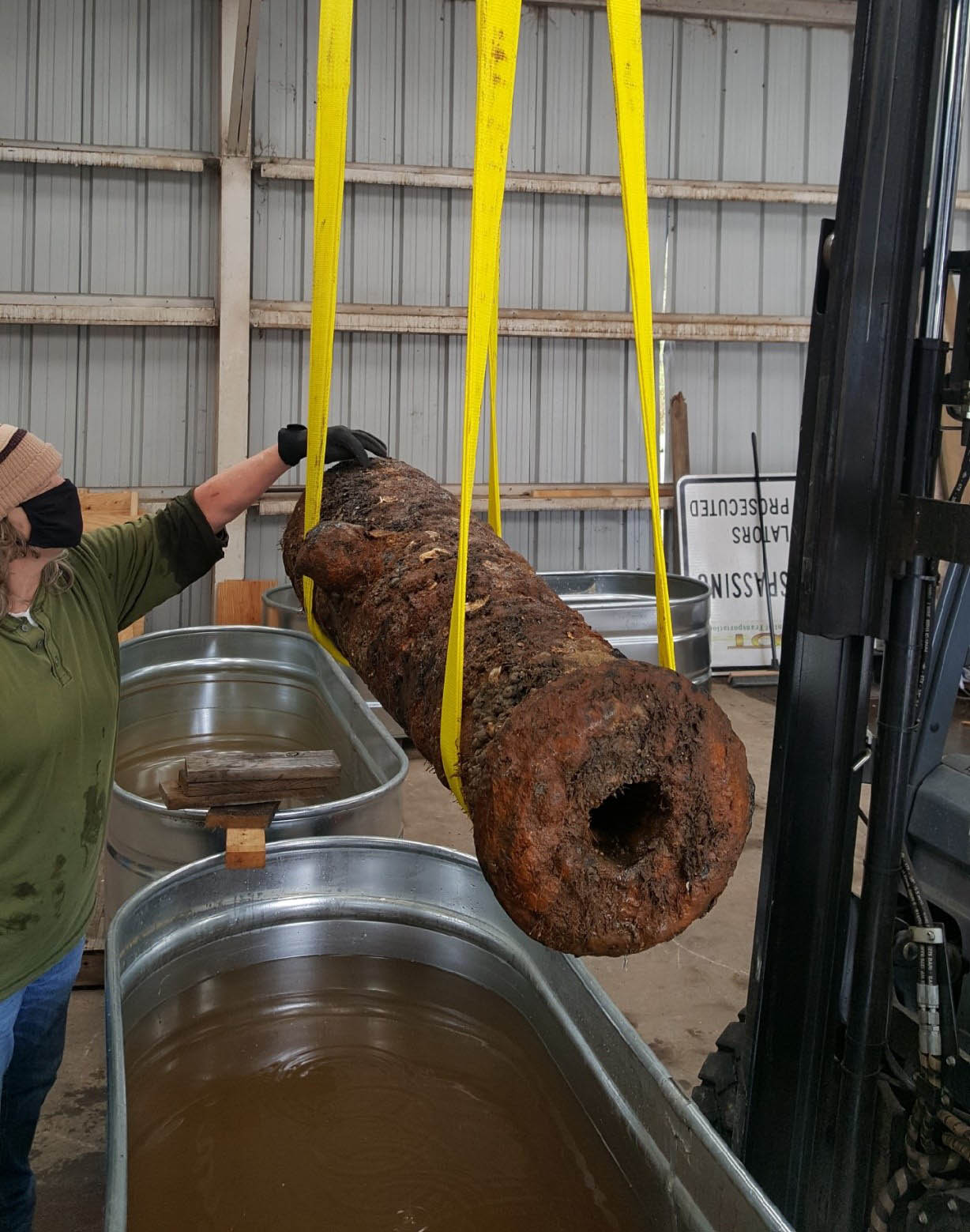Originally thought to be the vestiges of a Confederate Civil War ironclad, three cannons — discovered within the muck of the Savannah River — are now believed to be relics dating back over 250 years to the American Revolution.
Located alongside the cannons was an anchor and what is likely to be a piece of the ship’s timber.
Dredged up by the Army Corps of Engineers in late February during a multiagency harbor expansion project, a team of experts, archaeologists, and the British Royal Navy were consulted to determine the objects’ precise origins.
“It could (tell) a part of the story of Savannah that has not been looked at in a very long time,” Corps district archaeologist Andrea Farmer told CNN.

Based on the measurements and appearance of the cannons, the Royal Navy believes that the artifacts may be from the famed HMS Rose — which was scuttled on September 19, 1779 in an attempt to block the French from aiding the American’s siege of Savannah.
First captured in 1778, Britain’s occupation of Savannah was, according to historian Thomas G. Rodgers, “only the first stroke in a strategy geared to bring Virginia, the Carolinas, and Georgia back under royal control.”
As the Patriots and their French allies attempted to dislodge the British and their Loyalists, the HMS Rose, armed with 20 cannons and 160 sailors, was brought in to help quell the American siege.
The HMS Rose carried not only extra firepower, but a lethal reputation as well. The warship’s “success in intercepting smugglers at Newport had prompted the American side to commission its first armed ship, the sloop Providence, and to form the Continental Navy,” writes the Maritime-Executive.
The Rose continued to patrol the eastern seaboard before heading south, becoming one of two British ships scuttled at the mouth of the Savannah River. Her entire crew survived, later joining their British comrades in defense of the city.
Despite repeated American efforts, the city of Savannah remained in British hands until its withdrawal in 1782 at the conclusion of the war. Most of her wreckage was cleared after the British ceded the port.
However, after nearly 250 years the Rose may have once again been resurrected. While research, diving, and sonar scans of the site will be conducted before anyone knows for sure the origin and context of the artifacts, writes CNN, a tantalizing web of history now lies before archaeologists.
“I think it’s fantastic and interesting when artifacts from maritime history come to light,” Cmdr. Jim Morley, the UK’s assistant naval attaché in Washington, told CNN. “It just gives us an opportunity to look back at our common maritime history and history in general.”





